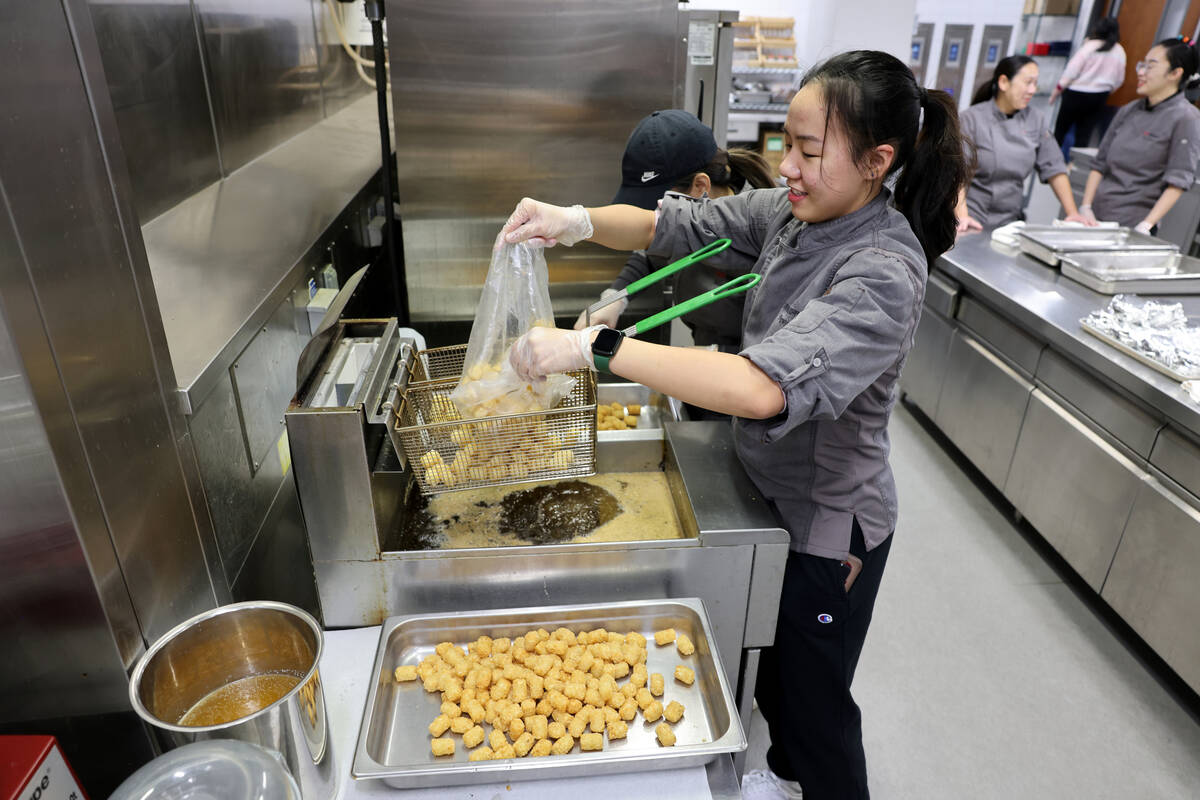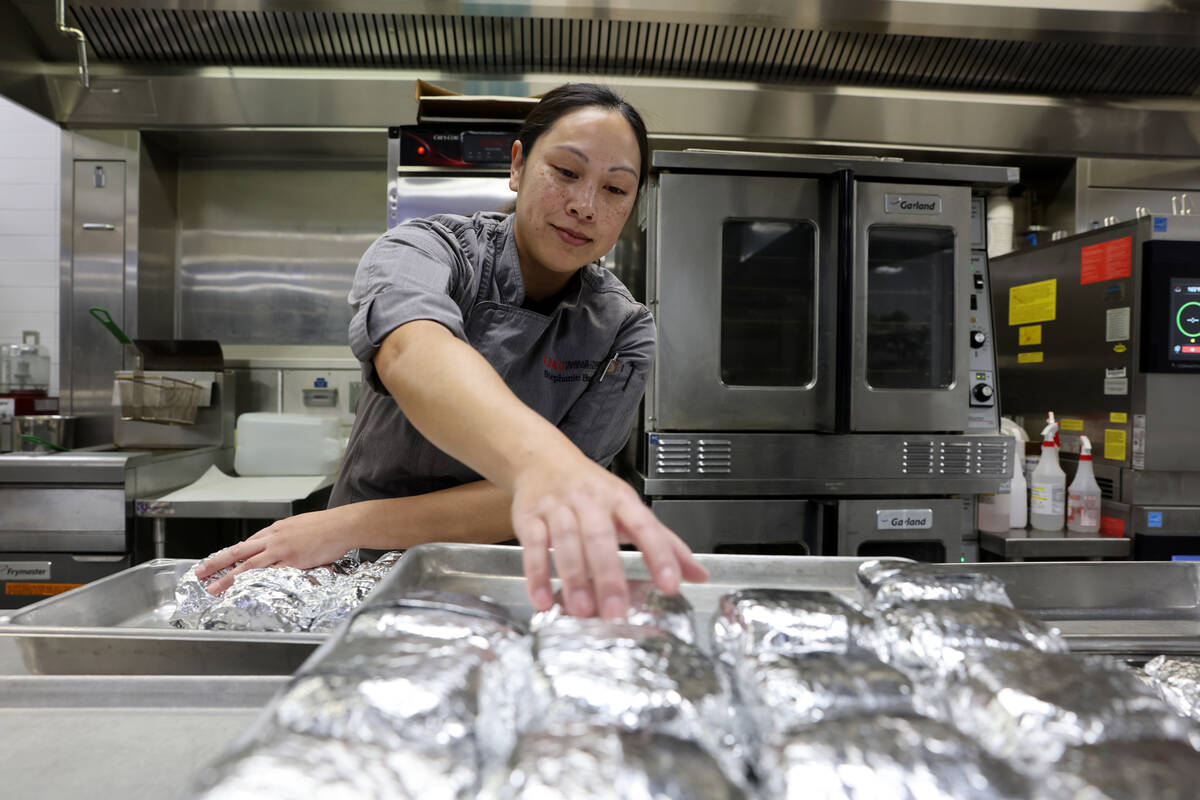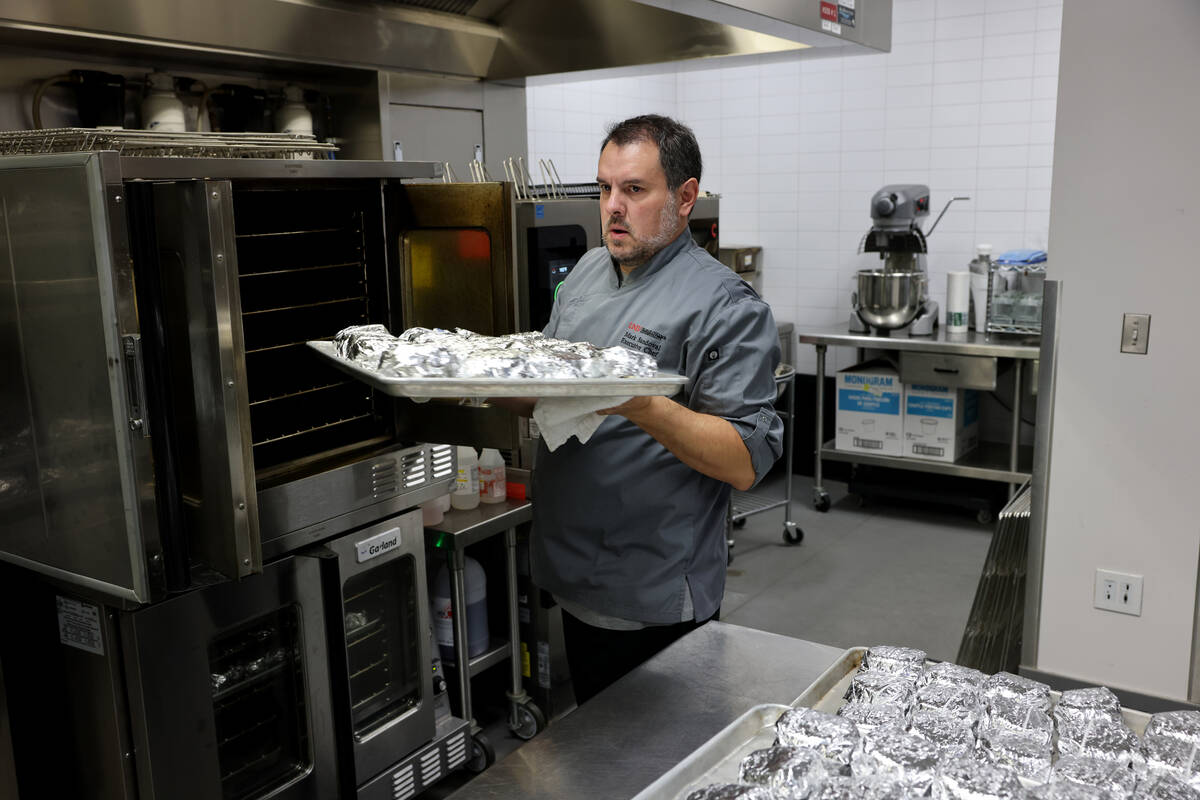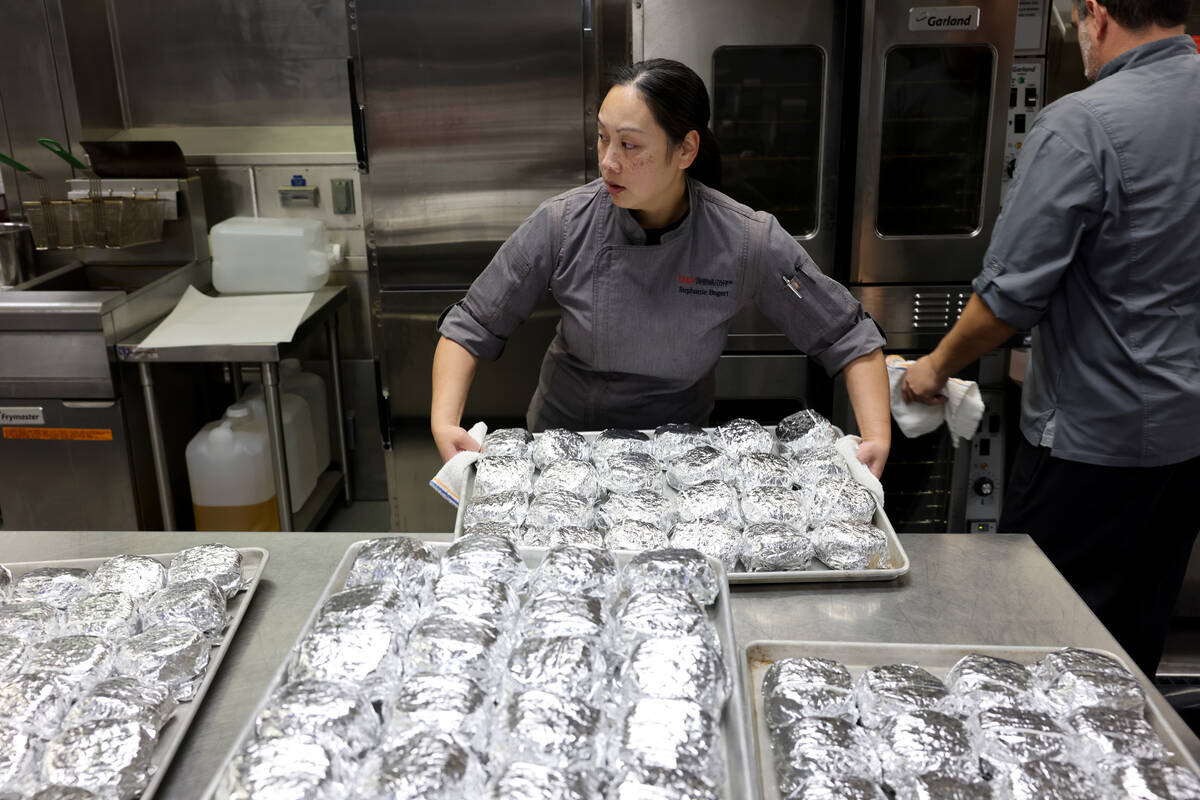‘It really fuels their brains’: Chefs cook for low-income students
On an early morning in December, Mark Sandoval and his students at UNLV’s Harrah College of Hospitality are up before the sun, preparing enough food to feed more than 600 small bodies.
Sandoval, executive chef at the hospitality college, and his students are just a handful of the chefs who cooked about 8,000 meals last year for low-income elementary school students who might not regularly have access to a nutritious, home-cooked meal in the mornings.
“There is really a lack of students learning at a young age what a balanced diet looks like and what a balanced diet can do for them on a daily basis and in their personal lives,” Sandoval said. “Not eating a healthy breakfast and getting your day started, especially at a young age, is detrimental. It really fuels their brains to be receptive to learning.”
Chefs for Kids, which originated more than 30 years ago from a partnership between the University of Nevada, Reno Extension and the Las Vegas chapter of the American Culinary Federation Chefs, brings meals to students at Title I schools, a federal designation for schools with a large percentage of low-income students with fewer educational resources.
For Sandoval, the program is a teaching moment for his students at UNLV, too.
Having students at the hospitality college participate in the program gives them hands-on experience and teaches the importance of being a member of their local community, beyond just patronizing local restaurants and networking with local chefs.
“For them, when we go and we serve 650 people, it happens pretty quickly,” Sandoval said. “It also teaches them to move quickly, to move with purpose and a sense of urgency.”
Mai Hoang, a senior at the hospitality college, was in her second year volunteering with Chefs for Kids and said she loved seeing the happiness the program brings to children’s faces.
“Every interaction is just so innocent and so genuine,” she said.
Chefs for Kids puts on roughly a dozen events each year, depending on its level of funding. In addition to providing students with a nutritious breakfast, it provided classroom lessons on nutrition to about 1,000 third grade students last year.
Inside the classroom, educators such as Cathy Batista teach students about vegetables like jicama, a Mexican turnip, which she recently served to students with a sprinkling of Tajin, a Mexican chili-lime seasoning.
Batista said many students are simply not provided with nutrition education at home, or their teacher doesn’t have the time or background to teach them about it.
“When we’re able to come in, we’re able to focus on those things and teach them things they just don’t know, like why you need fruits and vegetables,” she said.
Also, Batista said that when students learn about nutrition in a classroom setting, they may be more willing to branch out and try new foods than they are at home, according to parents who have given feedback on the program.
“Peer pressure works in our advantage,” she said. “It’s just a great opportunity for us to be able to make those positive impacts and change someone’s life and give them the opportunity they haven’t had at home.”
A previous version of this story incorrectly named executive chef Mark Sandoval and incorrectly stated his title.
Contact Lorraine Longhi at 702-387-5298 or llonghi@reviewjournal.com. Follow her at @lolonghi on Twitter.
























